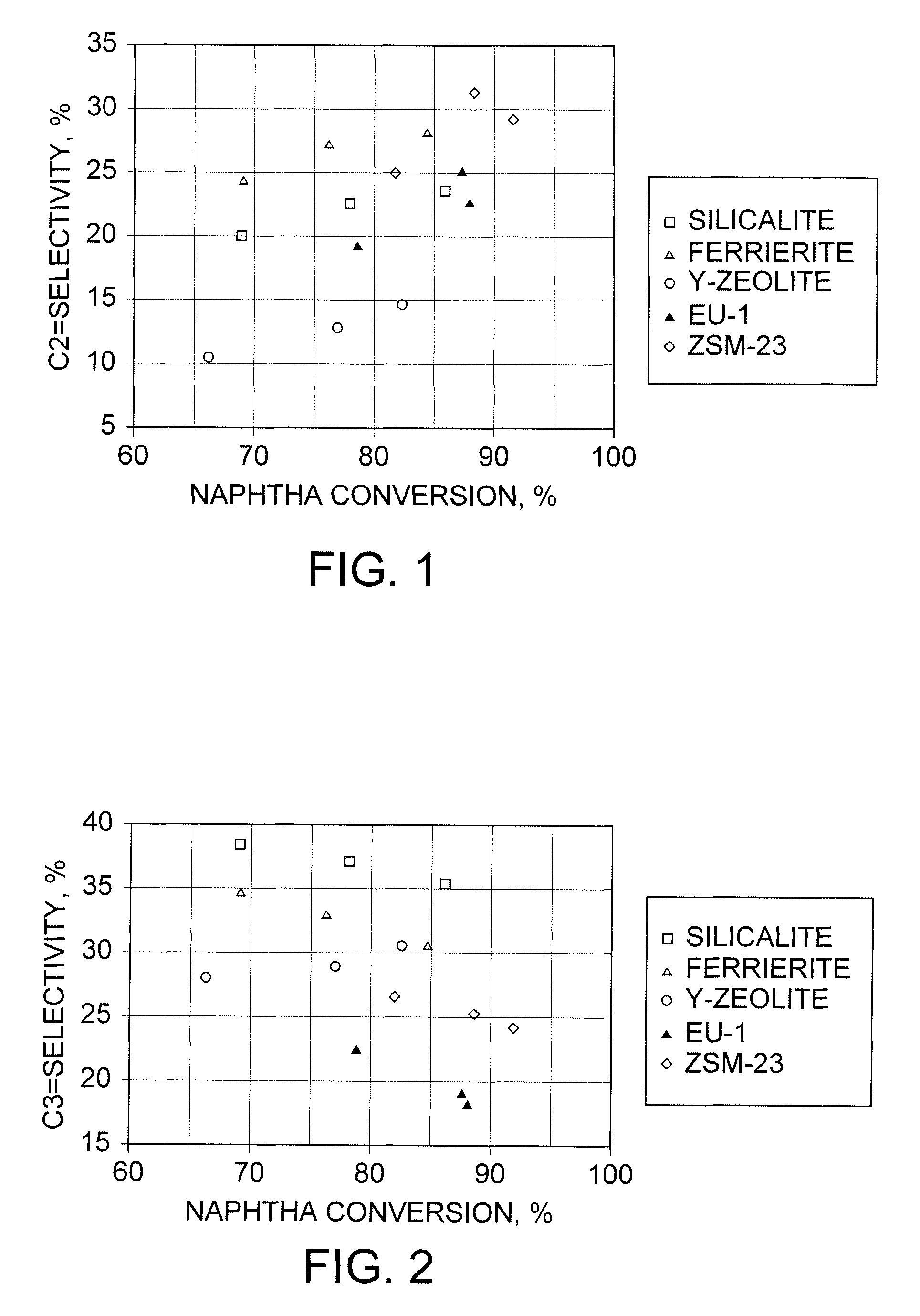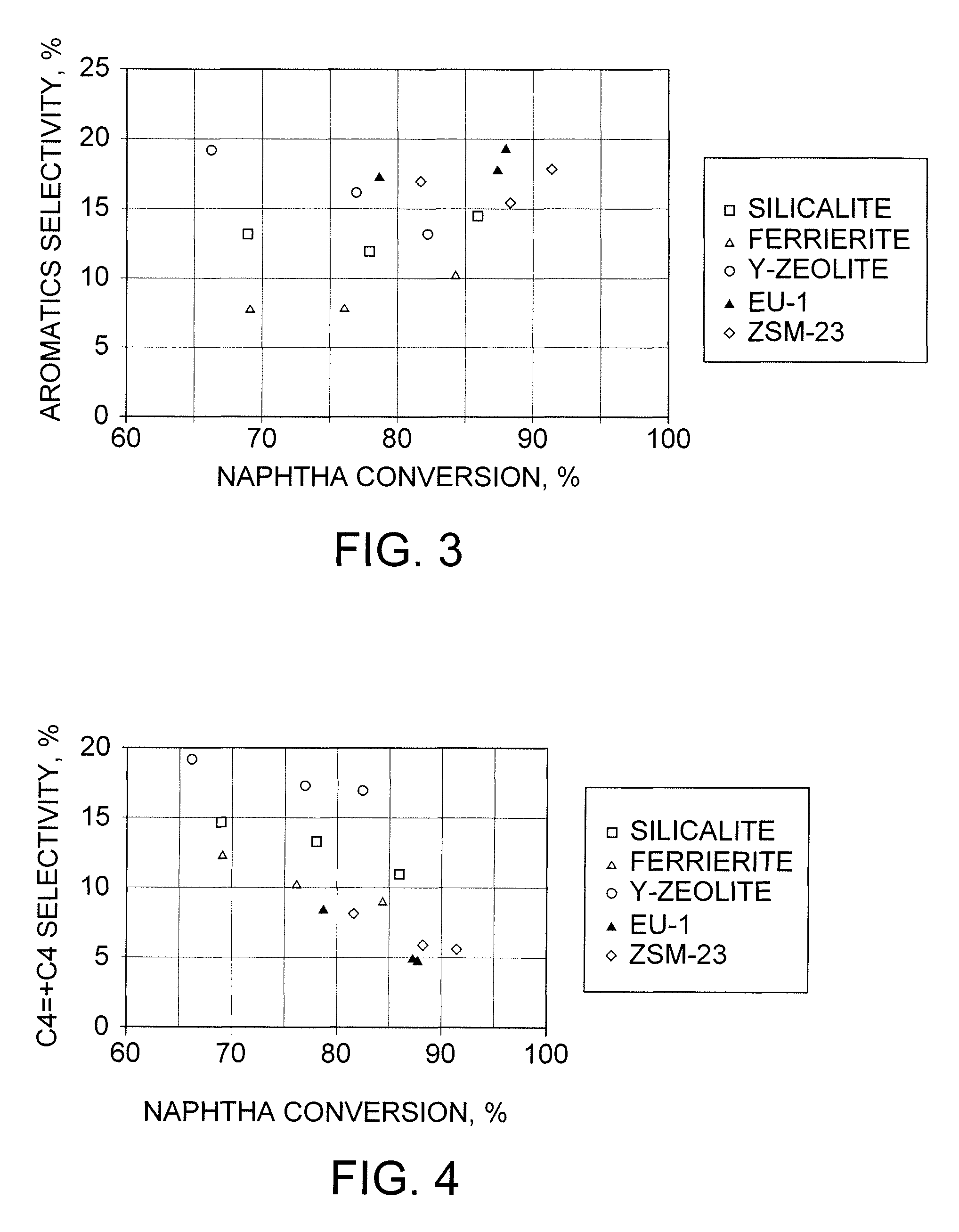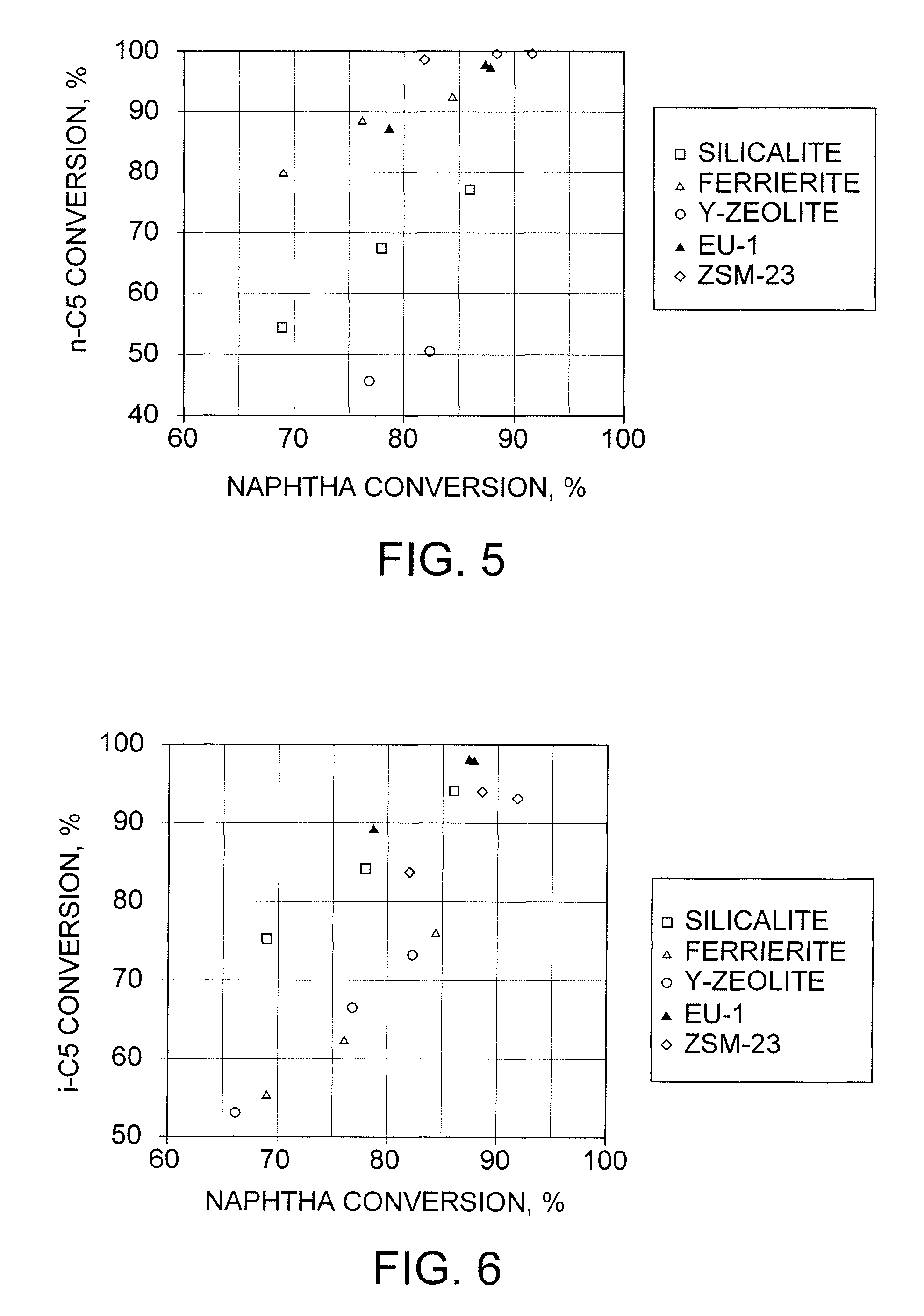Mixture of catalysts for cracking naphtha to olefins
a technology of catalysts and naphtha, which is applied in the direction of organic chemistry, chemical apparatus and processes, hydrocarbon oil treatment products, etc., can solve the problems of complex combination of reaction and gas recovery systems in the ethylene plant, low propylene-to-ethylene ratio, and multiple reaction reaction steps, so as to reduce the amount of light material, reduce the complexity of the reactor, and maximize the selective yield of desired products
- Summary
- Abstract
- Description
- Claims
- Application Information
AI Technical Summary
Benefits of technology
Problems solved by technology
Method used
Image
Examples
Embodiment Construction
[0027]Catalytic naphtha cracking has started to develop as a new route for the production of light olefins. There are several advantages of using a catalytic process over the conventional steam cracking, including improved yields and reduced material costs as a result of lower reactor temperatures.
[0028]A drawback of catalytic naphtha cracking is that it is difficult to accomplish full conversion of the feed in a single reactor pass. The optimum catalyst and process conditions for naphtha conversion are not optimal for conversion of intermediate products such as C4 and and C5 olefins and paraffins, propane, ethane, etc.
[0029]If large amounts of these byproducts form then they must be separated from the desired products (chiefly ethylene and propylene) the separation and recycle of these byproducts can impose high costs on the process. This is particularly true for light byproducts, as the separation of these compounds is usually carried out by cryogenic distillation. In general, it ...
PUM
| Property | Measurement | Unit |
|---|---|---|
| temperatures | aaaaa | aaaaa |
| partial pressures | aaaaa | aaaaa |
| temperature | aaaaa | aaaaa |
Abstract
Description
Claims
Application Information
 Login to View More
Login to View More - R&D
- Intellectual Property
- Life Sciences
- Materials
- Tech Scout
- Unparalleled Data Quality
- Higher Quality Content
- 60% Fewer Hallucinations
Browse by: Latest US Patents, China's latest patents, Technical Efficacy Thesaurus, Application Domain, Technology Topic, Popular Technical Reports.
© 2025 PatSnap. All rights reserved.Legal|Privacy policy|Modern Slavery Act Transparency Statement|Sitemap|About US| Contact US: help@patsnap.com



